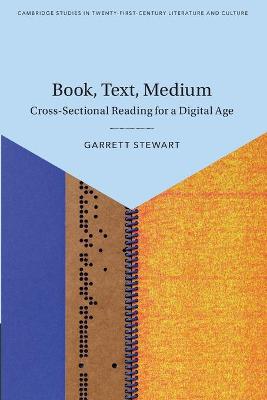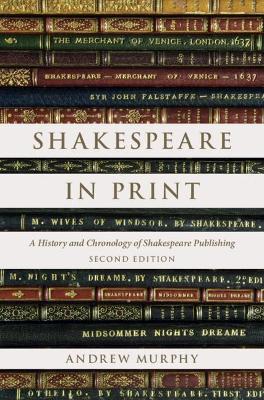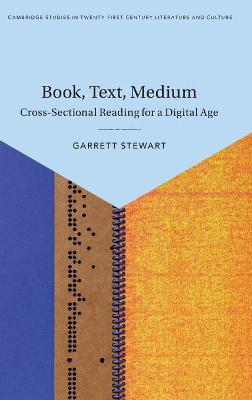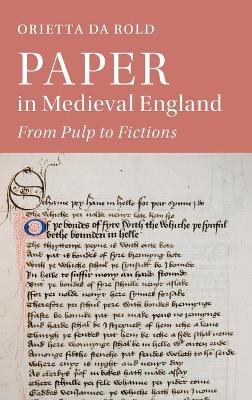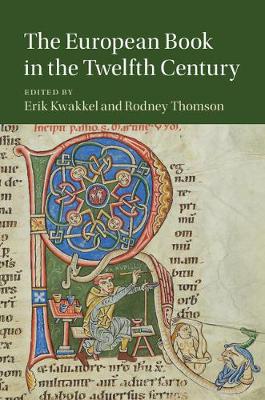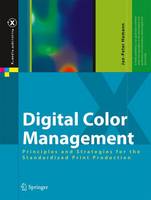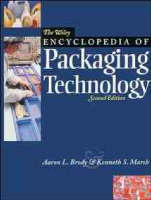2.5D Printing
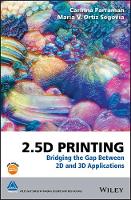 -15%
portes grátis
-15%
portes grátis
2.5D Printing
Bridging the Gap Between 2D and 3D Applications
Ortiz Segovia, Maria V.; Parraman, Carinna
John Wiley & Sons Inc
10/2018
272
Dura
Inglês
9781118967300
15 a 20 dias
556
Descrição não disponível.
About the Authors xi
Series Editor's Preface xiii
Preface xv
Acknowledgements xvii
About the Companion website xviii
Introduction xix
1 Defining the Field of 2.5D Printing 1
1.1 What is Texture? 1
1.1.1 How to Quantify Texture 2
1.1.2 How do Artists Convey the Appearance of Texture? 3
1.1.3 How the Natural World Mimics the Appearance of Texture 4
1.2 Measuring Texture and Colour 6
1.3 Images, Pictures and Reproductions 9
1.3.1 The Anxiety of the Reproduction 11
1.3.2 Reproducing Images: Tools of the Trade 12
1.3.3 Reproducing Images: Colour and Texture 15
1.3.4 Reproductions versus Forgeries versus Copies 15
1.3.5 Are Facsimiles and Replicas Important? 17
1.3.6 Copying from Old Masters 19
1.3.7 Technical Examination of Artworks 20
1.4 The Authenticity of the Image and Object and Perception of Things 21
1.5 Current Industrial and Mechanical Methods to Reproduce the Appearance of Texture 24
1.5.1 2D Printing Methods 24
1.5.2 The Emergence of 3D Printing 25
1.6 Conclusion 28
References 29
Bibliography and Further Reading 30
2 The Past 35
2.1 Introduction 35
2.2 Artists' Observations on the Appearance of Illumination 36
2.3 Artists' Conversion of Images into Relief 39
2.4 Artists' Exploration of Different Sculptural Relief 41
2.4.1 Examples of Degrees of Projection 45
2.5 Coloration of Relief Surfaces 51
2.5.1 Visualising and Reconstructing the Past 57
2.6 Examples of Artists' Approaches to Representation and Reproduction of Texture 58
References 66
Bibliography and Further Reading 67
3 The Present: Materials, Making, Capturing and Measuring 69
3.1 Introduction: Universal Knowledge 69
3.2 The Relationship of Digital Technologies, Knowledge of Materials and Skills 70
3.3 Methods to Capture and Measure Texture 78
3.3.1 Commercial and Specialist Scanners 78
3.3.2 Scanning for Cultural Heritage 82
3.3.3 In Pursuit of Standards: Metric versus Quality 84
3.4 Methods to Represent the Appearance of Texture 85
3.5 Physical Material Libraries 90
3.6 Methods for 2.5D Printing 92
3.6.1 Analogue versus Digital 93
3.6.2 Materials for Printing 96
3.6.3 Printing Functional Materials 102
References 105
Bibliography and Further Reading 108
4 The Future 115
4.1 Introduction 115
4.1.1 The Future of Education in Art Design and Sciences 115
4.1.2 The Future of Materials and Manufacture 116
4.2 Circular Economy and Sustainable Manufacturing 117
4.3 Worldwide Print Connectivity 119
4.4 Mass Printing for One 120
4.5 Security Printing 122
4.6 Conclusion 123
References 123
Bibliography and Further Reading 124
5 Case Studies 127
Case Study 1: Nature Printing in the Nineteenth Century 127
Case Study 2: Wallpaper Design 133
Wallpaper Printing Processes 134
Case Study 3: 2.5D Printed Tactile Books and Artworks 142
Examples of Tactile Images that Incorporate Multiplatform and Digital Print Technologies 148
Case Study 4: Coins and Medals 151
Making Coins 152
Medals of Dishonour Exhibition British Museum 155
Case Study 5: Capturing Texture of Paintings for Museum and Heritage 157
Visualising Surface Texture Through the Combination of 2D and 3D Data 157
Workflow: 3D Scanning and Processing 158
Generation of Colour RTI Images 158
Generation of Colour 3D Models 160
Case Study 6: Textiles 161
Case Study 7: Trompe l'Oeil 167
Case Study 8: Marble 172
Case Study 9: Gold 179
Printing Gold in the Digital Market Place 183
The Stafford Hoard and Gold Printing at The Jewellery Industry Innovation Centre, Birmingham Jewellery Quarter 184
Case Study 10: Exterior Decoration Tiles and Ceramics 185
Twenty-first Century Ceramic Tile Inkjet Printing 190
Case Study 11: Microstructural Texture 195
Case Study 12: Painting Machines 203
Computer Simulations for Representing Materials and Objects 204 Direct Manipulation 205
Translating Brush Strokes into Painting Machines 206
Methods of Converting Images into Brushstrokes 208
Brush Strokes and Painting Machines 210
Case Study 13: Analogue Printing Methods 214
Intaglio 214
Relief Printing 217
Lithography 220
Screenprinting 221
Case Study 14: Relief Woodblock Printing 223
References 230
Bibliography and Further Reading 234
Index 239
Series Editor's Preface xiii
Preface xv
Acknowledgements xvii
About the Companion website xviii
Introduction xix
1 Defining the Field of 2.5D Printing 1
1.1 What is Texture? 1
1.1.1 How to Quantify Texture 2
1.1.2 How do Artists Convey the Appearance of Texture? 3
1.1.3 How the Natural World Mimics the Appearance of Texture 4
1.2 Measuring Texture and Colour 6
1.3 Images, Pictures and Reproductions 9
1.3.1 The Anxiety of the Reproduction 11
1.3.2 Reproducing Images: Tools of the Trade 12
1.3.3 Reproducing Images: Colour and Texture 15
1.3.4 Reproductions versus Forgeries versus Copies 15
1.3.5 Are Facsimiles and Replicas Important? 17
1.3.6 Copying from Old Masters 19
1.3.7 Technical Examination of Artworks 20
1.4 The Authenticity of the Image and Object and Perception of Things 21
1.5 Current Industrial and Mechanical Methods to Reproduce the Appearance of Texture 24
1.5.1 2D Printing Methods 24
1.5.2 The Emergence of 3D Printing 25
1.6 Conclusion 28
References 29
Bibliography and Further Reading 30
2 The Past 35
2.1 Introduction 35
2.2 Artists' Observations on the Appearance of Illumination 36
2.3 Artists' Conversion of Images into Relief 39
2.4 Artists' Exploration of Different Sculptural Relief 41
2.4.1 Examples of Degrees of Projection 45
2.5 Coloration of Relief Surfaces 51
2.5.1 Visualising and Reconstructing the Past 57
2.6 Examples of Artists' Approaches to Representation and Reproduction of Texture 58
References 66
Bibliography and Further Reading 67
3 The Present: Materials, Making, Capturing and Measuring 69
3.1 Introduction: Universal Knowledge 69
3.2 The Relationship of Digital Technologies, Knowledge of Materials and Skills 70
3.3 Methods to Capture and Measure Texture 78
3.3.1 Commercial and Specialist Scanners 78
3.3.2 Scanning for Cultural Heritage 82
3.3.3 In Pursuit of Standards: Metric versus Quality 84
3.4 Methods to Represent the Appearance of Texture 85
3.5 Physical Material Libraries 90
3.6 Methods for 2.5D Printing 92
3.6.1 Analogue versus Digital 93
3.6.2 Materials for Printing 96
3.6.3 Printing Functional Materials 102
References 105
Bibliography and Further Reading 108
4 The Future 115
4.1 Introduction 115
4.1.1 The Future of Education in Art Design and Sciences 115
4.1.2 The Future of Materials and Manufacture 116
4.2 Circular Economy and Sustainable Manufacturing 117
4.3 Worldwide Print Connectivity 119
4.4 Mass Printing for One 120
4.5 Security Printing 122
4.6 Conclusion 123
References 123
Bibliography and Further Reading 124
5 Case Studies 127
Case Study 1: Nature Printing in the Nineteenth Century 127
Case Study 2: Wallpaper Design 133
Wallpaper Printing Processes 134
Case Study 3: 2.5D Printed Tactile Books and Artworks 142
Examples of Tactile Images that Incorporate Multiplatform and Digital Print Technologies 148
Case Study 4: Coins and Medals 151
Making Coins 152
Medals of Dishonour Exhibition British Museum 155
Case Study 5: Capturing Texture of Paintings for Museum and Heritage 157
Visualising Surface Texture Through the Combination of 2D and 3D Data 157
Workflow: 3D Scanning and Processing 158
Generation of Colour RTI Images 158
Generation of Colour 3D Models 160
Case Study 6: Textiles 161
Case Study 7: Trompe l'Oeil 167
Case Study 8: Marble 172
Case Study 9: Gold 179
Printing Gold in the Digital Market Place 183
The Stafford Hoard and Gold Printing at The Jewellery Industry Innovation Centre, Birmingham Jewellery Quarter 184
Case Study 10: Exterior Decoration Tiles and Ceramics 185
Twenty-first Century Ceramic Tile Inkjet Printing 190
Case Study 11: Microstructural Texture 195
Case Study 12: Painting Machines 203
Computer Simulations for Representing Materials and Objects 204 Direct Manipulation 205
Translating Brush Strokes into Painting Machines 206
Methods of Converting Images into Brushstrokes 208
Brush Strokes and Painting Machines 210
Case Study 13: Analogue Printing Methods 214
Intaglio 214
Relief Printing 217
Lithography 220
Screenprinting 221
Case Study 14: Relief Woodblock Printing 223
References 230
Bibliography and Further Reading 234
Index 239
Este título pertence ao(s) assunto(s) indicados(s). Para ver outros títulos clique no assunto desejado.
Guide to texture printing; guide to 2.5D printing; reference to texture printing; reference to 2.5 printing; Texture and tactile; 2.5D, 2D and 3D printing; traditional materials and new materials; methods for scanning and capturing; industrial print technologies and manufacturing; reproduction, fakes and forgeries; illumination and illusion; measurement, standards and qualities; heritage and conservation; analogue versus digital: traditional making and 21st century fabrication methods; new methods of 3D printing; modelling 2.5 printing; textural qualities in 2D printing; two and three dimensional printing; 2.5D Printing Bridging the Gap Between 2D and 3D Applications; Carinna Parraman and Maria V. Ortiz Segovia
About the Authors xi
Series Editor's Preface xiii
Preface xv
Acknowledgements xvii
About the Companion website xviii
Introduction xix
1 Defining the Field of 2.5D Printing 1
1.1 What is Texture? 1
1.1.1 How to Quantify Texture 2
1.1.2 How do Artists Convey the Appearance of Texture? 3
1.1.3 How the Natural World Mimics the Appearance of Texture 4
1.2 Measuring Texture and Colour 6
1.3 Images, Pictures and Reproductions 9
1.3.1 The Anxiety of the Reproduction 11
1.3.2 Reproducing Images: Tools of the Trade 12
1.3.3 Reproducing Images: Colour and Texture 15
1.3.4 Reproductions versus Forgeries versus Copies 15
1.3.5 Are Facsimiles and Replicas Important? 17
1.3.6 Copying from Old Masters 19
1.3.7 Technical Examination of Artworks 20
1.4 The Authenticity of the Image and Object and Perception of Things 21
1.5 Current Industrial and Mechanical Methods to Reproduce the Appearance of Texture 24
1.5.1 2D Printing Methods 24
1.5.2 The Emergence of 3D Printing 25
1.6 Conclusion 28
References 29
Bibliography and Further Reading 30
2 The Past 35
2.1 Introduction 35
2.2 Artists' Observations on the Appearance of Illumination 36
2.3 Artists' Conversion of Images into Relief 39
2.4 Artists' Exploration of Different Sculptural Relief 41
2.4.1 Examples of Degrees of Projection 45
2.5 Coloration of Relief Surfaces 51
2.5.1 Visualising and Reconstructing the Past 57
2.6 Examples of Artists' Approaches to Representation and Reproduction of Texture 58
References 66
Bibliography and Further Reading 67
3 The Present: Materials, Making, Capturing and Measuring 69
3.1 Introduction: Universal Knowledge 69
3.2 The Relationship of Digital Technologies, Knowledge of Materials and Skills 70
3.3 Methods to Capture and Measure Texture 78
3.3.1 Commercial and Specialist Scanners 78
3.3.2 Scanning for Cultural Heritage 82
3.3.3 In Pursuit of Standards: Metric versus Quality 84
3.4 Methods to Represent the Appearance of Texture 85
3.5 Physical Material Libraries 90
3.6 Methods for 2.5D Printing 92
3.6.1 Analogue versus Digital 93
3.6.2 Materials for Printing 96
3.6.3 Printing Functional Materials 102
References 105
Bibliography and Further Reading 108
4 The Future 115
4.1 Introduction 115
4.1.1 The Future of Education in Art Design and Sciences 115
4.1.2 The Future of Materials and Manufacture 116
4.2 Circular Economy and Sustainable Manufacturing 117
4.3 Worldwide Print Connectivity 119
4.4 Mass Printing for One 120
4.5 Security Printing 122
4.6 Conclusion 123
References 123
Bibliography and Further Reading 124
5 Case Studies 127
Case Study 1: Nature Printing in the Nineteenth Century 127
Case Study 2: Wallpaper Design 133
Wallpaper Printing Processes 134
Case Study 3: 2.5D Printed Tactile Books and Artworks 142
Examples of Tactile Images that Incorporate Multiplatform and Digital Print Technologies 148
Case Study 4: Coins and Medals 151
Making Coins 152
Medals of Dishonour Exhibition British Museum 155
Case Study 5: Capturing Texture of Paintings for Museum and Heritage 157
Visualising Surface Texture Through the Combination of 2D and 3D Data 157
Workflow: 3D Scanning and Processing 158
Generation of Colour RTI Images 158
Generation of Colour 3D Models 160
Case Study 6: Textiles 161
Case Study 7: Trompe l'Oeil 167
Case Study 8: Marble 172
Case Study 9: Gold 179
Printing Gold in the Digital Market Place 183
The Stafford Hoard and Gold Printing at The Jewellery Industry Innovation Centre, Birmingham Jewellery Quarter 184
Case Study 10: Exterior Decoration Tiles and Ceramics 185
Twenty-first Century Ceramic Tile Inkjet Printing 190
Case Study 11: Microstructural Texture 195
Case Study 12: Painting Machines 203
Computer Simulations for Representing Materials and Objects 204 Direct Manipulation 205
Translating Brush Strokes into Painting Machines 206
Methods of Converting Images into Brushstrokes 208
Brush Strokes and Painting Machines 210
Case Study 13: Analogue Printing Methods 214
Intaglio 214
Relief Printing 217
Lithography 220
Screenprinting 221
Case Study 14: Relief Woodblock Printing 223
References 230
Bibliography and Further Reading 234
Index 239
Series Editor's Preface xiii
Preface xv
Acknowledgements xvii
About the Companion website xviii
Introduction xix
1 Defining the Field of 2.5D Printing 1
1.1 What is Texture? 1
1.1.1 How to Quantify Texture 2
1.1.2 How do Artists Convey the Appearance of Texture? 3
1.1.3 How the Natural World Mimics the Appearance of Texture 4
1.2 Measuring Texture and Colour 6
1.3 Images, Pictures and Reproductions 9
1.3.1 The Anxiety of the Reproduction 11
1.3.2 Reproducing Images: Tools of the Trade 12
1.3.3 Reproducing Images: Colour and Texture 15
1.3.4 Reproductions versus Forgeries versus Copies 15
1.3.5 Are Facsimiles and Replicas Important? 17
1.3.6 Copying from Old Masters 19
1.3.7 Technical Examination of Artworks 20
1.4 The Authenticity of the Image and Object and Perception of Things 21
1.5 Current Industrial and Mechanical Methods to Reproduce the Appearance of Texture 24
1.5.1 2D Printing Methods 24
1.5.2 The Emergence of 3D Printing 25
1.6 Conclusion 28
References 29
Bibliography and Further Reading 30
2 The Past 35
2.1 Introduction 35
2.2 Artists' Observations on the Appearance of Illumination 36
2.3 Artists' Conversion of Images into Relief 39
2.4 Artists' Exploration of Different Sculptural Relief 41
2.4.1 Examples of Degrees of Projection 45
2.5 Coloration of Relief Surfaces 51
2.5.1 Visualising and Reconstructing the Past 57
2.6 Examples of Artists' Approaches to Representation and Reproduction of Texture 58
References 66
Bibliography and Further Reading 67
3 The Present: Materials, Making, Capturing and Measuring 69
3.1 Introduction: Universal Knowledge 69
3.2 The Relationship of Digital Technologies, Knowledge of Materials and Skills 70
3.3 Methods to Capture and Measure Texture 78
3.3.1 Commercial and Specialist Scanners 78
3.3.2 Scanning for Cultural Heritage 82
3.3.3 In Pursuit of Standards: Metric versus Quality 84
3.4 Methods to Represent the Appearance of Texture 85
3.5 Physical Material Libraries 90
3.6 Methods for 2.5D Printing 92
3.6.1 Analogue versus Digital 93
3.6.2 Materials for Printing 96
3.6.3 Printing Functional Materials 102
References 105
Bibliography and Further Reading 108
4 The Future 115
4.1 Introduction 115
4.1.1 The Future of Education in Art Design and Sciences 115
4.1.2 The Future of Materials and Manufacture 116
4.2 Circular Economy and Sustainable Manufacturing 117
4.3 Worldwide Print Connectivity 119
4.4 Mass Printing for One 120
4.5 Security Printing 122
4.6 Conclusion 123
References 123
Bibliography and Further Reading 124
5 Case Studies 127
Case Study 1: Nature Printing in the Nineteenth Century 127
Case Study 2: Wallpaper Design 133
Wallpaper Printing Processes 134
Case Study 3: 2.5D Printed Tactile Books and Artworks 142
Examples of Tactile Images that Incorporate Multiplatform and Digital Print Technologies 148
Case Study 4: Coins and Medals 151
Making Coins 152
Medals of Dishonour Exhibition British Museum 155
Case Study 5: Capturing Texture of Paintings for Museum and Heritage 157
Visualising Surface Texture Through the Combination of 2D and 3D Data 157
Workflow: 3D Scanning and Processing 158
Generation of Colour RTI Images 158
Generation of Colour 3D Models 160
Case Study 6: Textiles 161
Case Study 7: Trompe l'Oeil 167
Case Study 8: Marble 172
Case Study 9: Gold 179
Printing Gold in the Digital Market Place 183
The Stafford Hoard and Gold Printing at The Jewellery Industry Innovation Centre, Birmingham Jewellery Quarter 184
Case Study 10: Exterior Decoration Tiles and Ceramics 185
Twenty-first Century Ceramic Tile Inkjet Printing 190
Case Study 11: Microstructural Texture 195
Case Study 12: Painting Machines 203
Computer Simulations for Representing Materials and Objects 204 Direct Manipulation 205
Translating Brush Strokes into Painting Machines 206
Methods of Converting Images into Brushstrokes 208
Brush Strokes and Painting Machines 210
Case Study 13: Analogue Printing Methods 214
Intaglio 214
Relief Printing 217
Lithography 220
Screenprinting 221
Case Study 14: Relief Woodblock Printing 223
References 230
Bibliography and Further Reading 234
Index 239
Este título pertence ao(s) assunto(s) indicados(s). Para ver outros títulos clique no assunto desejado.
Guide to texture printing; guide to 2.5D printing; reference to texture printing; reference to 2.5 printing; Texture and tactile; 2.5D, 2D and 3D printing; traditional materials and new materials; methods for scanning and capturing; industrial print technologies and manufacturing; reproduction, fakes and forgeries; illumination and illusion; measurement, standards and qualities; heritage and conservation; analogue versus digital: traditional making and 21st century fabrication methods; new methods of 3D printing; modelling 2.5 printing; textural qualities in 2D printing; two and three dimensional printing; 2.5D Printing Bridging the Gap Between 2D and 3D Applications; Carinna Parraman and Maria V. Ortiz Segovia

